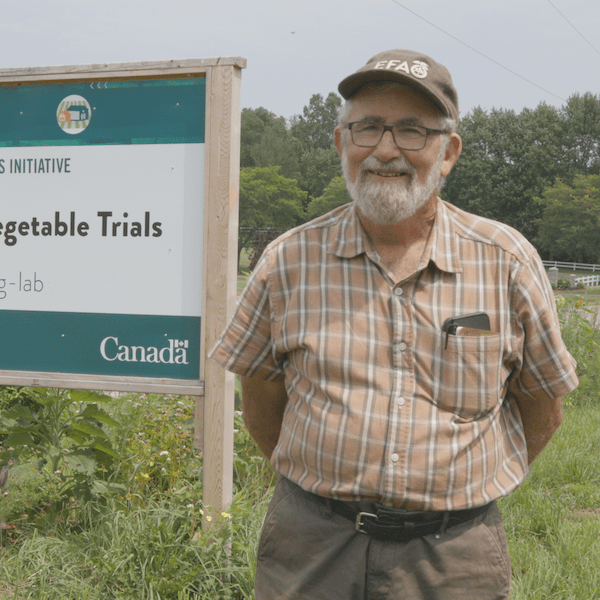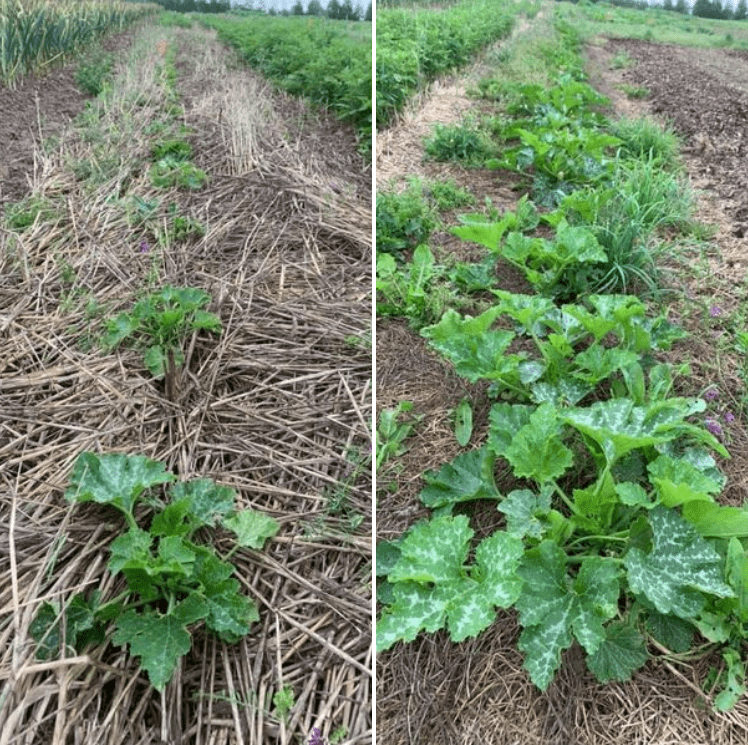
Ken Laing – Organic No-Till Vegetable Trials
To reduce tillage in organic vegetable systems, Ken trialed a total of 13 organic vegetable crops no-till planted or transplanted into nine cover crop combinations.
The most promising no-till planting strategies that produced good weed control and good yields were not continuous no-till systems, since digging root crops is a major tillage event and establishing cover crops to plant into required tillage. They included:
- Organic garlic no-till planted into a mown cover crop of sorghum sudangrass without any tillage for weed control
- Organic potatoes no-till planted into mown cover crop of rye/hairy vetch without any hilling or tillage for weed control
- Winter squash transplanted no-till into rolled hairy vetch and deep compost mulch without any tillage for weed control
Guiding Principles
- Reduce tillage for organic vegetable production
- Use a mechanized approach suitable for mid-scale vegetable grower (i.e. 10-50 ac)
- Avoid the use of agricultural plastic materials
No-till Strategies Used
- Planting or transplanting into winter killed cover crops
- Planting or transplanting into green cover crops either before or after termination
- Planting or transplanting into deep compost mulch (DCM)
Research Strategies Used
- 2020 | A broad survey or proof of concept of many strategies and crops to narrow down promising combinations.
- 2021 | Demonstration plots of the most promising combinations from 2020
- 2022 | Randomized, replicated plots of the demonstration plots from 2021
Follow Ken’s Work

Living Lab – Ontario: Ken Laing Interim Summary 2020-2021
Read Ken’s interim summary of his 2020 and 2021 trials comparing different cover crops and mulching systems to reduce tillage and maintain continuous cover for transplanted and direct seeded organic vegetable crops.

No-Till Vegetable Trials: Equipment Used
A gallery and description of the equipment Ken Laing uses as part of his no-till vegetable trials.

New Collaborations: Farming a Living Lab
Ken Laing and Brett Israel answer questions about their involvement in the Living Lab – Ontario initiative, what it’s been like so far, and what they hope to accomplish with their research.



